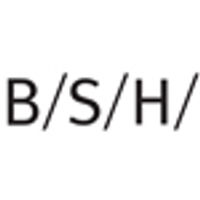
How to Write a Placement CV (With Template)
When you send off a placement CV, it can be a bit nerve-wracking. But ultimately, you want to make a good impression – quickly.
To help you craft the ultimate CV and astound recruiters for placements, we’ve put together a step-by-step guide.

What is a placement year CV?
You can use this guide to write a CV for any placement you might be applying for.
Our guide and template can also be used for all student roles, whether it’s a placement, internship or insight scheme.
Simply follow each step, taking care to tailor your placement CV to the role, industry and company you are applying to.
Steps to write a CV for a placement year (with a downloadable template)
Here are seven things to always include in a CV, whether you’re applying for a placement, a graduate role or any top dog position:
Step 1: Contact details
Start with your name. Then provide contact details: your phone number, email and home address. If you don’t want to provide your full address, use your general area. For example; Slough, United Kingdom or Bethnal Green, London.
A placement year CV doesn’t require you to send a photo. Only attach one if the recruiter asks you to do so, which will only be done in specific scenarios. Make it a sensible one, such as a passport photo or headshot.
If you’re looking for some placement CV inspiration, we’ve put together a template… Remember, your CV should be 100% your own words.
DOWNLOAD PLACEMENT CV TEMPLATEStep 2: Personal profile
Your profile is a short body of text that acts as an introduction to your placement CV.
This section of a CV seems to terrify people. But there are ways to make writing a profile feel a little less scary.
If you follow these simple steps, your profile should feel a lot easier to write:
Tailor your profile to the placement you’re applying for
Outline who you are and why you’re interested in this specific role/company
Carefully avoid CV buzzwords, like ‘motivated’, ‘driven’ and ‘passionate’
Keep it to less than five sentences.
Step 3: Key skills
Recruiters can be inundated with CVs when hiring for a role. This is why it’s crucial to make an immediate impression on the reader.
After your profile, the key skills section is where you make an impact. Draw up a list of your key skills and strengths and put it in bullet point form, making it easy to digest.
Focus on the employability skills that employers crave, making sure to include soft and technical skills:
Communication skills
Creativity
Problem-solving
Intermediate in Adobe Photoshop, InDesign, and Illustrator
Advanced qualification in Microsoft Excel.
Step 4: Education
Students applying for a placement during university can provide a predicted grade for their degree. Even if you haven’t finished university, employers want to know what you’re working towards.
It’s also important to remember to put your most recent qualifications first. Your university grades are at the top, A-Levels and then your GCSEs.
The education section is a good opportunity to tailor your placement CV to the job you are applying for. Draw attention to any modules or projects you have completed that are relevant to the role.
Step 5: Previous work experience
If an employer has been lured in by your profile and key skills, the next thing they will look for on your CV is work experience.
But it can be tough figuring out which jobs to include, and which to leave out. Do they want to hear about your part-time job stacking shelves at Tesco?
YES – if you show how you contributed to the business and what you learnt from your time there. You can do this by listing your key responsibilities and achievements for each role.
If you worked on the cheese counter at Waitrose for a summer, focus on the responsibilities you were given. Were you involved in pricing? Or trusted with cashing up at the end of a shift?
Of course, if you have any work experience that is directly related to the placement, you will be loved by the employers.
Step 6: Interests
The interests section of your placement CV is an opportunity to let the recruiter know a little more about you.
What do you do with your time when you’re not on the clock? Focus on pursuits that are active and team-based. Playing a sport is good - do you captain the team or organise their social events? Were you Player of the Year last year?
Again, try and tailor your interests towards the placement yer you’re applying to.
For example, if you’re applying for a language placement, and you show no evidence of extra-curricular interest in languages, the recruiter will wonder if you have an interest in the role.
References
You don’t need to give your references’ contact details at the end of your placement CV. Rather, ‘references available upon request’ will be fine for now.
An employer would normally contact your references once you’ve been given a job offer.
Ask your references first if they’re happy to be contacted and what their preferred mode of contact is… it’ll make it 5000 times easier.
Things to Remember
Here are a few expert tips to consider when writing your CV for placements:
Check your spelling and grammar
Don’t just rely on spellcheck. Ask your friends, family or university careers service to have a look at your CV before you send it off.
This will minimise the chances of your application going straight into the reject pile.
Give lots of evidence
If you’re struggling to think of different examples to demonstrate your skills, think of extra-curricular activities that might help illustrate them.
For example, if you’re in a sports team, think about teamwork, leadership and organisational skills.
Tailor your CV to the placement
Businesses look for students who have the same values and qualities as their brand.
Research the values and vision of the company you are applying to first and then give examples of why you are a good match.






















